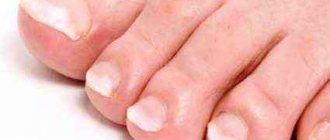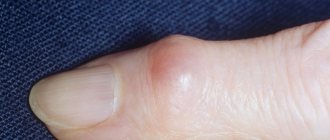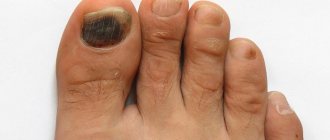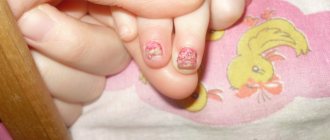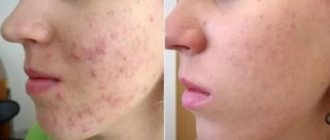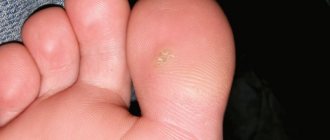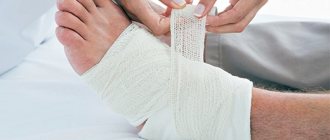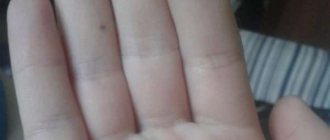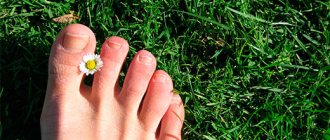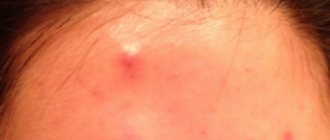Finger suppuration (felon) begins after pyogenic microbes - streptococci and staphylococci - are introduced into the wound. As they multiply, the disease progresses rapidly. At the onset of the disease, various home remedies help well, which should preferably be used under medical supervision. But if the symptoms do not go away, but only worsen, you cannot do without the intervention of a surgeon. This disease should not be taken lightly as without proper treatment there is a risk of sepsis. People who observe good personal hygiene and have a strong immune system are less vulnerable to this disease than others.
Causes
If your toe is festering, there can be many reasons for the abscess. One of the main ones is the presence of hangnails near the nail - particles of dead skin that must always be removed using nail scissors or special tweezers. If this procedure is ignored, the hangnails will break off on their own, forming small lesions into which various infections can penetrate.
Another cause of a purulent abscess is an ingrown toenail. This phenomenon occurs when the nails are ineptly or improperly cared for, or after they are injured during any work or sports. The nail, growing into the skin around it, forms lesions on the fingers, which open the way for the penetration of bacteria. Also, an abscess on a toe or hand can appear due to the rapid proliferation of staphylococci, which, at the slightest cuts, scratches or even splinters, immediately penetrate the damaged area. This is why it is so important to keep your feet and hands clean. So, the process when the big toe festers can be caused by the following main reasons:
- ignoring the rules of personal hygiene;
- pedicure or manicure performed incorrectly and using unsterile instruments;
- injury to fingers and nails;
- fungal or bacterial infection;
- excess weight and hyperhidrosis.
Possible causes of a sore finger
The basis for inflammation of a finger or nail is a poor-quality pedicure, after which an abscess can come out. Careless movement of the master leads to damage to the cuticle, which results in an inflammatory complication. As a result, pus/suppuration will accumulate in the wound near the nail. The pathological process is provoked by microorganisms of the streptococcal and staphylococcal type, which live on the skin of any person.
The psychosomatics of an abscess on the toe is systemic in nature. The onset and exacerbation of inflammation is preceded by a number of conditions and factors:
- a significant decrease in human immune properties;
- the occurrence of serious circulatory/hormonal disorders (for example, diabetes mellitus);
- the presence of dysfunction in metabolism;
- activity of pathogenic fungus on nails and feet.
Panaritium occurs after mechanical impact on the skin and fingers. The inflammatory process can form from various injuries, elementary scratches, splinters and minor cracks in the skin. As soon as the integrity of the integument is compromised, infection penetrates there and pus begins to accumulate. The wound should be treated with alcohol-containing solutions or iodine.
A hangnail is the cause of pathology and accumulation of pus in various tissues of the fingers near the nail. The raised skin is formed due to a lack of various vitamins. An abscess can break through after exposure to medications and procedures.
People at risk include people who do manicures without antiseptic treatment of tools, tear off the skin, bite their nails and systematically ignore hygiene rules. The symptoms of the disorder are as follows:
- acute inflammation of the finger near the nail;
- violation of the integrity of the epidermis, which indicates the development of infection;
- characterized by swelling, redness and severe itching (the leg is enlarged);
- the affected area of skin begins to hurt;
- a deep inflammatory process is accompanied by the appearance of purulent blisters;
- with the affected joint, the person cannot bend the fingers, which become hot and hard;
- elevated body temperature and a significant deterioration in health indicate suppuration of the tendon and fatty tissue.
Main symptoms
When a finger becomes suppurated, the symptoms are always very acute. The patient feels pain, which is expressed by pulsating and twitching in the affected area. The skin of the finger turns red, and the finger itself swells and swells. In the area of the inflamed area, the skin becomes shiny. The body temperature in the area of the abscess rises. If the panaritium is superficial, pustules may appear on the skin.
In some particularly difficult cases, a person may experience an increase in general temperature, accompanied by chills, general weakness, aches throughout the body and headache. The motor function of a festering finger is significantly limited, and it often ceases to be sensitive. If the suppuration is deep, the pain usually intensifies. If on the first day it is still quite tolerable, then on the second it is very difficult to endure it without taking analgesics, since it becomes bursting. A sick person loses ability to work and sleep.
Diagnosing felon is quite simple. An experienced doctor can determine the stage of the disease based on an external examination of the patient's nail and finger. However, if there is a suspicion that the suppuration process is too deep, an x-ray is taken. Blood tests may indicate the presence of inflammation.
Drug treatment
Treatment of panaritium with medications at home is carried out with pronounced symptoms, namely if there are:
- high body temperature;
- limited mobility of fingers or toes;
- severe pain in the affected area with the formation of an abscess.
In case of acute inflammatory process, antibacterial therapy together with local treatment is necessary.
Vishnevsky ointment draws out pus in several applications
Important. Infections can lead to blood poisoning and death of the patient.
Deterioration in well-being with an increase in body temperature indicates the infectious nature of felon.
Staphylococcal and streptococcal infections are treated with antibiotics, while fungal infections are treated with antifungal drugs.
In case of deep localization, the abscess is opened, and antibacterial drugs such as Ceftazidime and Ceftriaxone are used to treat the wound.
Types of suppuration and stages of the disease
Suppuration in the finger occurs gradually and the sooner treatment is started, the sooner a positive result can be expected. With panaritium, several stages of disease development can be observed. At the initial stage, the disease affects only the upper layer of the skin. If left untreated, the disease penetrates deeper, bringing a person noticeable discomfort. If no measures are taken at this stage, the pus will affect the muscle tissue and reach the bone.
In addition, doctors have identified several types of this unpleasant disease:
- Periungual suppuration occurs near the nail. The disease occurs after an incorrectly performed pedicure or manicure. Such consequences appear when the nail is damaged by fungal spores or with an ingrown nail plate.
- Suppuration under the skin, as well as cutaneous panaritium, usually appear if there is a strong inflammatory process of the skin of the finger itself. They are characterized by swelling, redness, and pain when squeezed.
- Subungual suppuration can occur if a splinter or other foreign body gets into the skin under the nail plate.
- Inflammation of the bone tissue leads to bone panaritium. With this disease, in addition to sharp pain and redness of the skin, a person practically loses the motor ability of the affected finger.
Traditional Treatments
An old and proven way by many people to remove pus from a finger is to use salt and soap. Many people already classify this remedy as a method of traditional rather than traditional medicine. Excellent at drawing out pus, it reduces inflammation and alleviates the general condition of the patient. The product is used in the form of a compress. To prepare it, you need to fold a piece of wide bandage into several layers, moisten it in water, rub it with soap and sprinkle with crushed salt. The compress is applied to the area where the finger is festering for 2-3 hours. After the procedure, the sore finger should be rinsed with clean water. If necessary, the procedure can be repeated after a while.
More serious methods of treating the disease include the use of syntomycin liniment. It has a detrimental effect on pathogenic bacteria that cause suppuration. This ointment, which contains an antibiotic, removes redness, swelling, pain, and also blocks the possible spread of the infectious process.
Another old but effective way to remove pus from a finger is Vishnevsky ointment. This product has one significant drawback - an unpleasant and pungent odor. However, if you come to terms with this drawback, then you can get rid of inflammation with the help of this ointment very quickly. Just one compress based on this product, applied to your finger at night, will help you feel a significant improvement in the morning.
If no improvement is observed after treatment with these remedies, you should definitely see a doctor. There are cases when surgical intervention is required to remove accumulated pus.
Principles of treatment
Panaritium occurs due to exposure to microbes, most often staphylococcus and streptococcus, so antibacterial therapy is mandatory in this case.
The choice of methods for treating felon at home depends on the severity of pain and the inflammatory process:
- Conservative therapy is suitable if there is an area of redness and swelling on the finger or toe;
- in case of severe pain and the formation of an abscess, surgery cannot be avoided.
Surgical intervention is necessary if conservative treatment does not help or when the process is started
Important. Treatment of felon in a child at home should begin immediately, because inflammation progresses quickly and leads to loss of finger mobility.
There are several types of purulent inflammation. The most common types are cutaneous and subcutaneous. The latter, without treatment, leads to complications in the form of damage to joints, tendons and bones. Subungual panaritium does not lead to such consequences, but is accompanied by severe pain.
The more the finger swells, the worse the pain
Note. Each type of panaritium manifests itself differently.
So how to treat felon at home? Medicines, medicinal herbs and folk remedies are suitable.
Traditional methods of treatment
There are a large number of folk recipes that tell you what to do in case of finger suppuration. These recipes are simple, they use available ingredients, and, according to supporters of traditional medicine, they quickly and effectively get rid of panaritium without the use of medications or visits to the clinic.
An effective remedy is ordinary laundry soap. When suppuration appears, you should wet the sore finger and soap it well. After this, without washing off the soap, you should bandage your finger. Within an hour, the site of the abscess will begin to tug very sensitively, and after some time it will burst, and the pus will flow out.
Aloe leaves are often used to draw out pus. It needs to be cut lengthwise, the wet part applied to the abscess and bandaged. In the morning, you may be surprised to find a completely dry leaf and significant improvements in the sore finger. The procedure should be repeated daily until the wound is completely healed.
There is another recipe that is widely used for suppuration of the fingers. It involves applying half an onion, previously baked in a dry frying pan, to the sore spot. Moreover, you need to apply warm onion in such a way that the inflamed area comes into contact with the cut of the vegetable. After bandaging your finger, leave the compress overnight. The procedure can be repeated daily until recovery.
To relieve inflammation, you can take a bath with potassium permanganate. To do this, you need to throw several crystals of potassium permanganate into warm water to get a pink color. The sore finger should be kept in this solution for 5-8 minutes. To enhance the effect, you can add a few drops of calendula tincture to the bath.
How to remove pus from a finger using baking soda
For a disease such as felon, a soda bath helps a lot. To prepare it, you need to add two tablespoons of baking soda to a glass of hot water, then dip your sore finger in it for 30 minutes.
Do not forget that a one-time use of such a bath is unlikely to help; such a disease requires complex treatment. It must be done at least three times a day for 2-3 days. After each such procedure, the wound should be lubricated with iodine.
Recent Entries
Is it possible to give a mirror: how to protect yourself from bad omens It became known about the influence of cell phone towers on human health Is it possible to eat bananas bought in Russia?
Bath of garlic, sea buckthorn oil and soda
To prepare it, you need to finely chop one head of garlic and add boiled water, but it must first cool down to about +80C. For one head of garlic you will need approximately 200 ml of cooled boiled water. Leave this mixture for five minutes to infuse, then add three drops of sea buckthorn oil and 2 tablespoons of soda to it.
Mode of application
After the mixture has infused for about one minute, you can begin the procedure. The water should be approximately +70C. The sore finger should be lowered into this glass for a couple of seconds, then pulled out and lowered again; you should not keep it in the water all the time. As the water cools, try to keep your finger in the water longer. If the bath is used for a child, it is recommended to reduce the amount of garlic to avoid burning.
There is pus under the skin on the finger, what treatment should I take for an abscess?
Even in the first stages of the disease, felon can be cured at home, but under the supervision of a doctor. But if the symptoms intensify, the body temperature rises significantly, and severe suppuration appears, then you should immediately consult a surgeon. Treatment at home includes the following methods:
- Regular baths with potassium permanganate. To prepare it, you need to add a small amount of potassium permanganate to a glass of boiled water (previously cooled slightly) until the water turns a faint pink color. Then the sore finger is dipped into this solution for 5-7 minutes.
- After the procedure, the sore spot is carefully blotted with a bandage and gauze folded four times and soaked in dioxidine ointment is placed on it.
- The applied compress should be secured well with a bandage.
If the symptoms intensify, then the doctor provides surgical treatment, which takes place under local anesthesia. The operation is simple, the doctor makes a small incision and removes dead tissue, then injects an antibiotic. If a person has a subungual panaritium, then the nail is removed. Duration of treatment is 5-7 days.
Vishnevsky ointment will help get rid of pus on the finger
The famous Vishnevsky ointment is an effective and harmless medicine that has a wide range of applications.
It contains three unusual components - xeroform, tar and castor oil. Each of them has its own specific property, for example, xeroform has a drying effect, tar has an irritating effect on nerve endings, thereby restoring blood supply to tissues. Thanks to the medicinal properties of Vishnevskaya ointment, it has been used in many areas. First of all, it is indispensable for various inflammations, suppurations, abscesses and boils, and also helps well with frostbite and burns. Of course, when you come to the hospital, you are unlikely to be prescribed this remedy, but at home it should certainly be in every first aid kit.
Mode of application
If you find inflammation and suppuration in the form of an abscess or boil, then you need to carry out the following treatment. Take gauze and fold it in four layers and apply Vishnevsky ointment to it. Then apply this bandage to the affected area of skin and secure with a bandage and leave for about 12 hours. After the above time has passed, remove the bandage and carefully remove the remaining ointment using a napkin. Treat the affected area with medical alcohol and reapply a new bandage with Vishnevsky ointment.
